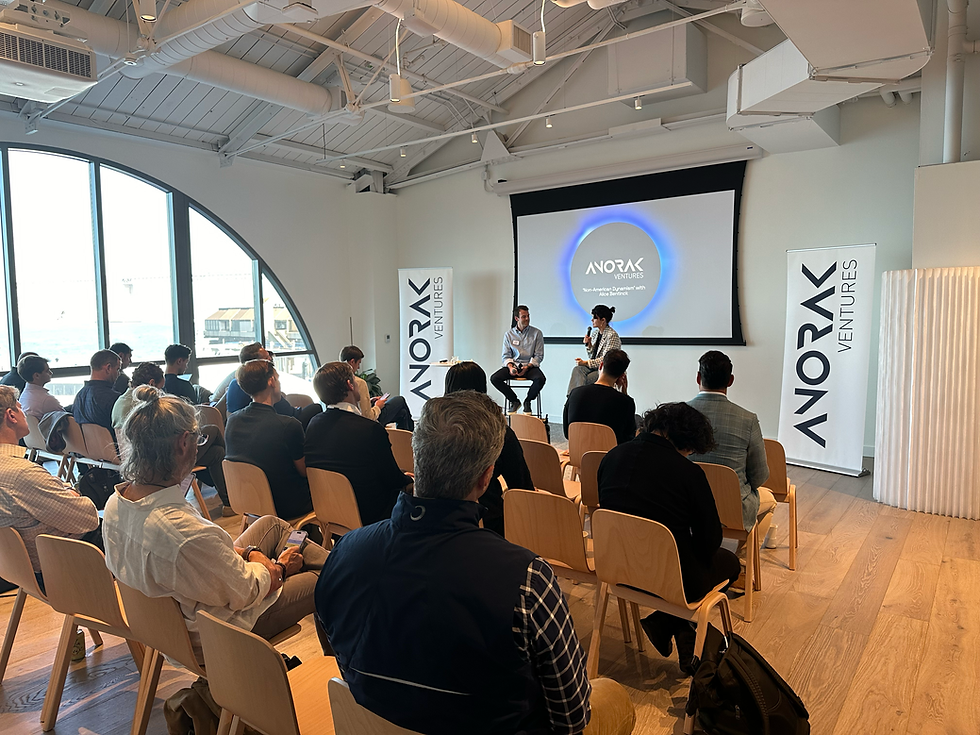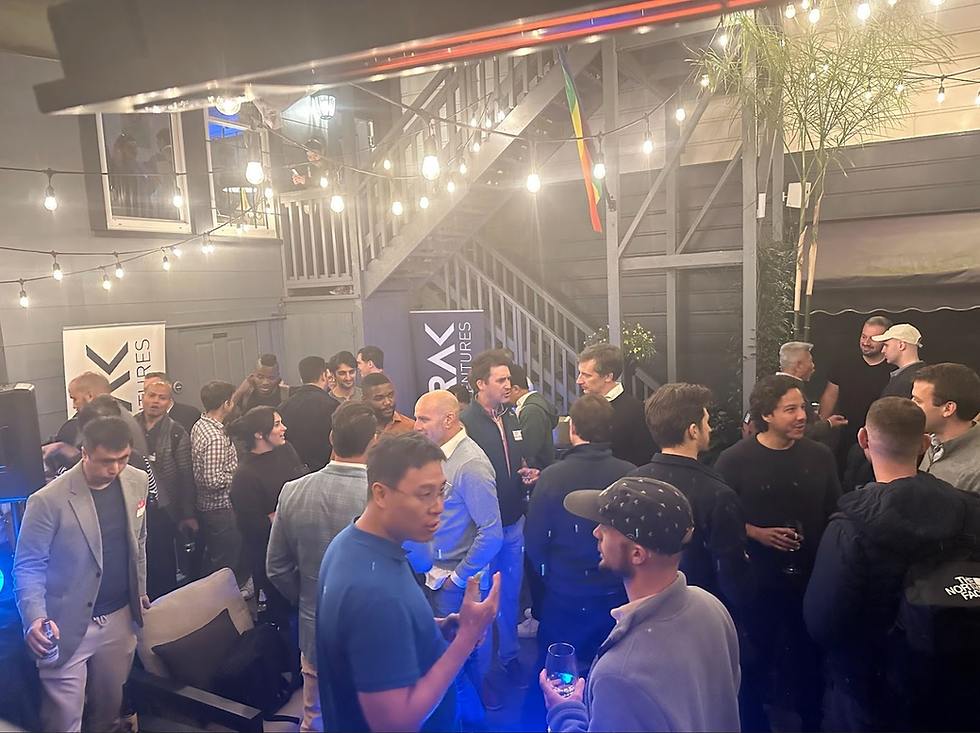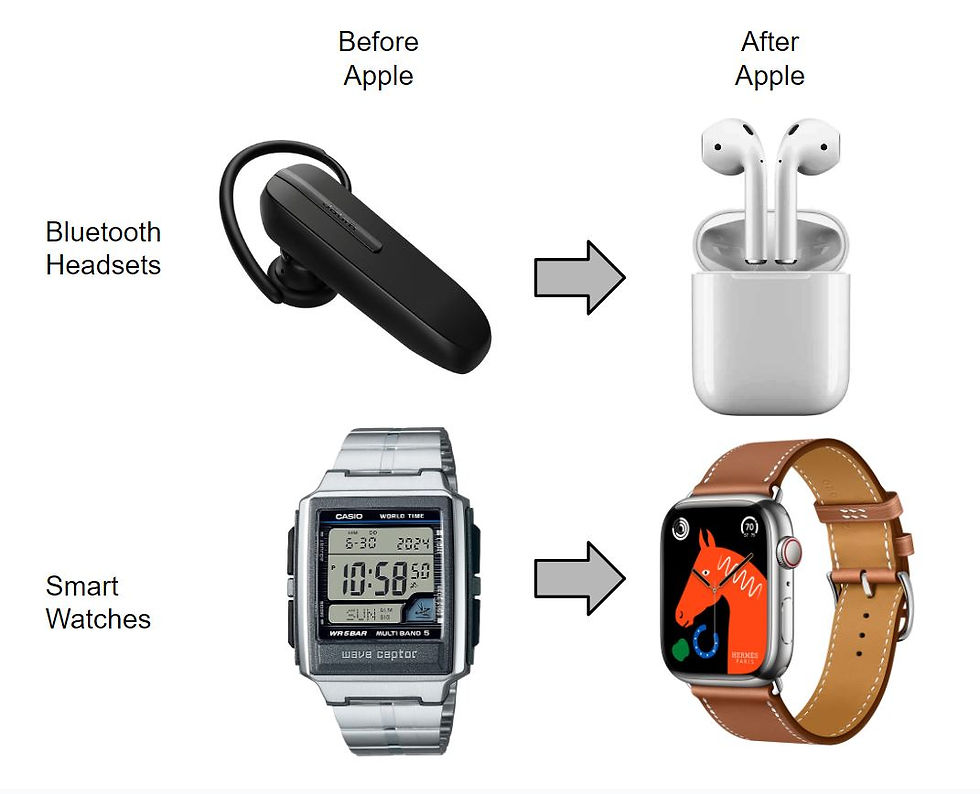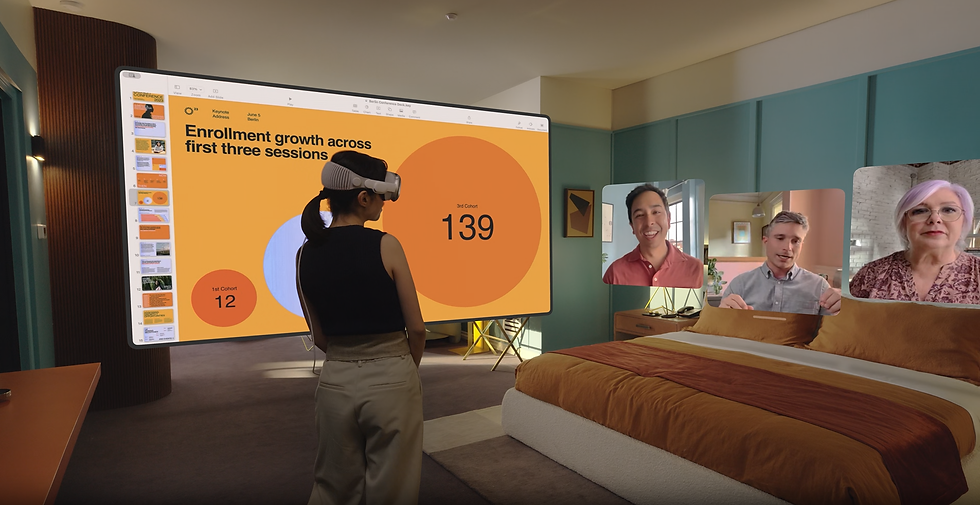- Charlie Leggate
- Feb 26
- 2 min read
On October 10th, we hosted our annual partner meeting at Shack 15 in San Francisco’s iconic ferry building. The afternoon was attended by an amazing group of investors and founders who presented on topics including Robotics, AI, AR/VR, Material science, extraterrestrial communications, and early-stage investing. We were also treated to an airshow provided by the Blue Angels!

Key takeaways from our State of Venture presentation include:
The S&P500 is having a strong year (+23%), driven mainly by large-cap equities, while small-cap equities are lagging behind (+7%). Lower public multiples and political and economic uncertainty have kept the IPO market stunted for technology companies.

Anorak's State of Venture Keynote With IPO and M&A activity low, liquidity for LPs has suffered, resulting in less capital available to be reinvested into the venture asset class.
LPs are increasingly favoring experienced fund managers and fewer funds are increasing in fund size YoY.
VCs with capital to deploy have more investment options and greater leverage when negotiating terms. It’s an investor friendly market for those with capital to deploy.
We heard from a selection of incredible founders and friends of the fund:
We learnt about the latest developments in Ai from Jake, how robots are changing the face of retail from Brad, efficient military planning from Grant, building gaming communities from Jack, material advancements from Derek, transmission of video from space with Nicolaas, as well as the incredible story of building and selling OpenGov for $1.8B from Zach. Finally, Alice Bentinck, the CEO of Entrepreneur First sat down with Charlie to discuss Non-American Dynamism and why she has recently moved the launch phase of her accelerator to San Francisco.

We covered Anorak’s fund performance, provided an update on our thesis, and gave a first look at our plans for Fund III:
Flock Safety, Anduril, Rec Room remain the core return drivers of Fund I. Onebrief and Simbe recently closed massive funding rounds and show great promise of pushing TVPI well beyond 5x.
Fund II is still early, but Framework, Gridware, Trass Games, Sesame, and Polimorphic are showing early signs of breakout success. We’re targeting the same 5x TVPI.
We consistently see authentic, mission-driven founders have better results in raising, hiring, and growing their businesses. The patriotic movement to ensure the US and our allies remain strong and resilient is a timely mission we will continue supporting through Fund III.
Our top-performing founders come through trusted referrals. As our network of investors and successful founders continues to grow, we will develop systems to accelerate and encourage these valuable referrals.
Over 160 people attended our evening event, including investors from almost every major firm and inspiring founders in our network.

A massive thank you to our sponsors, UBS, Steifel, Perlson, VentureBest, and Orrick. To all the founders and friends who presented, we thank you for your time. We feel lucky every day to be supported by such a strong community and are incredibly excited to continue our work with Fund III.




